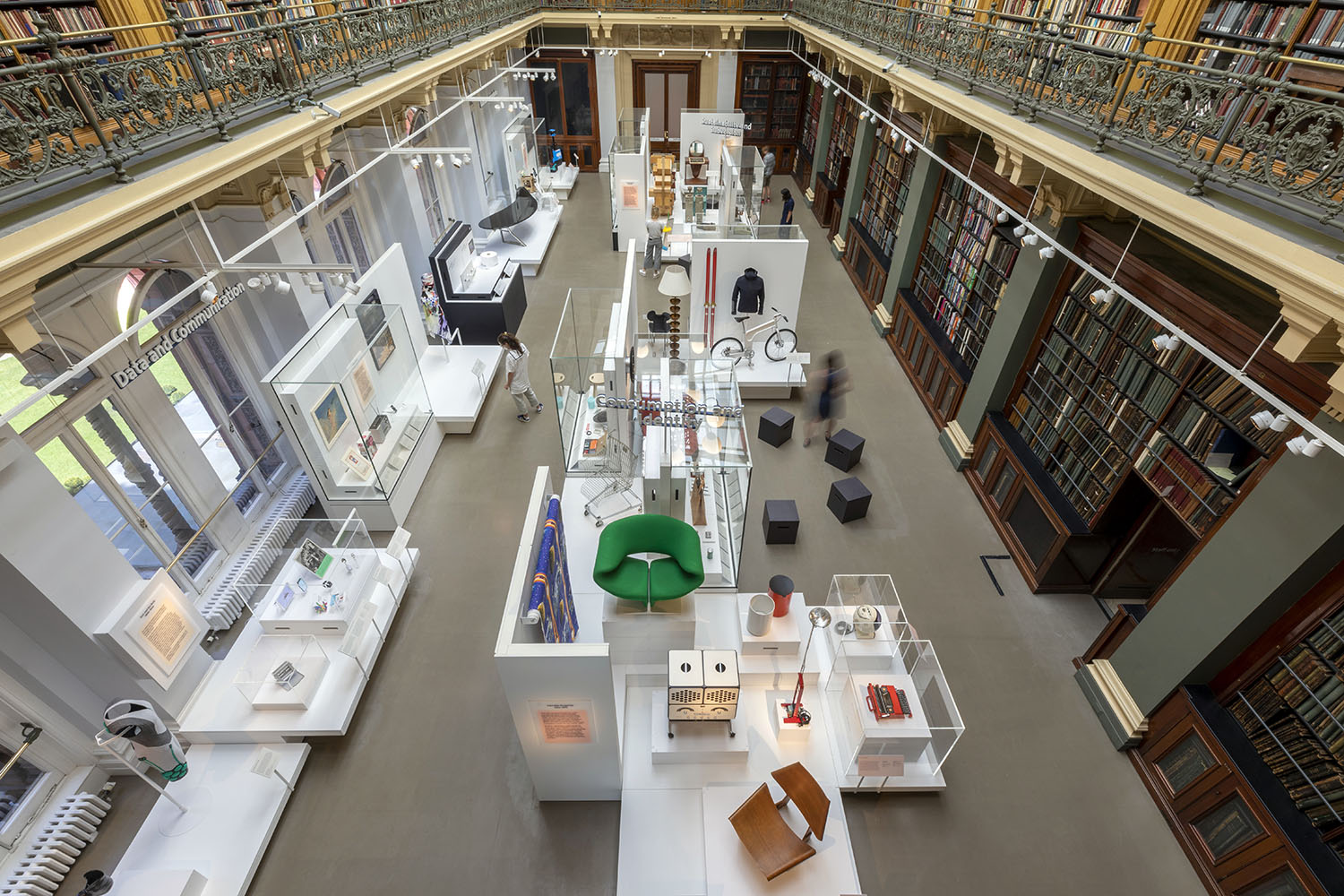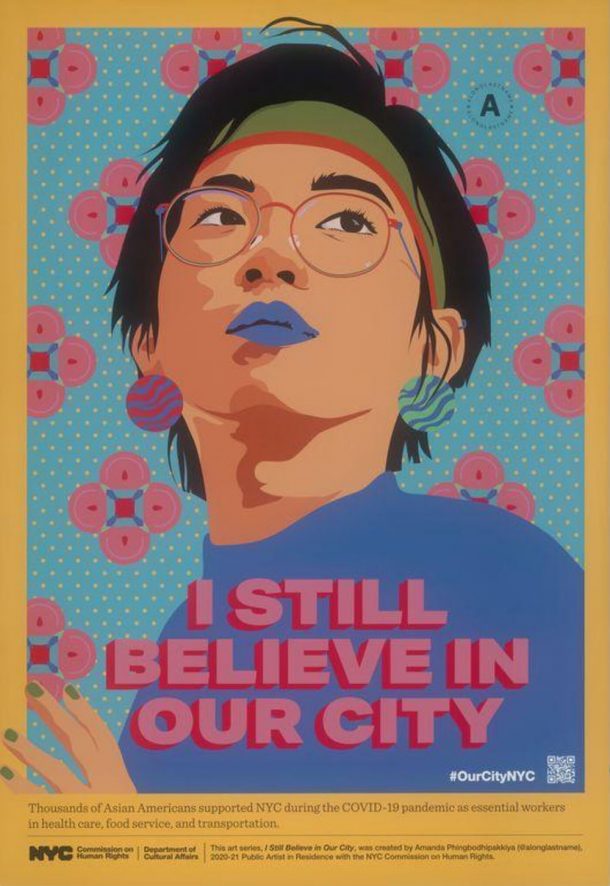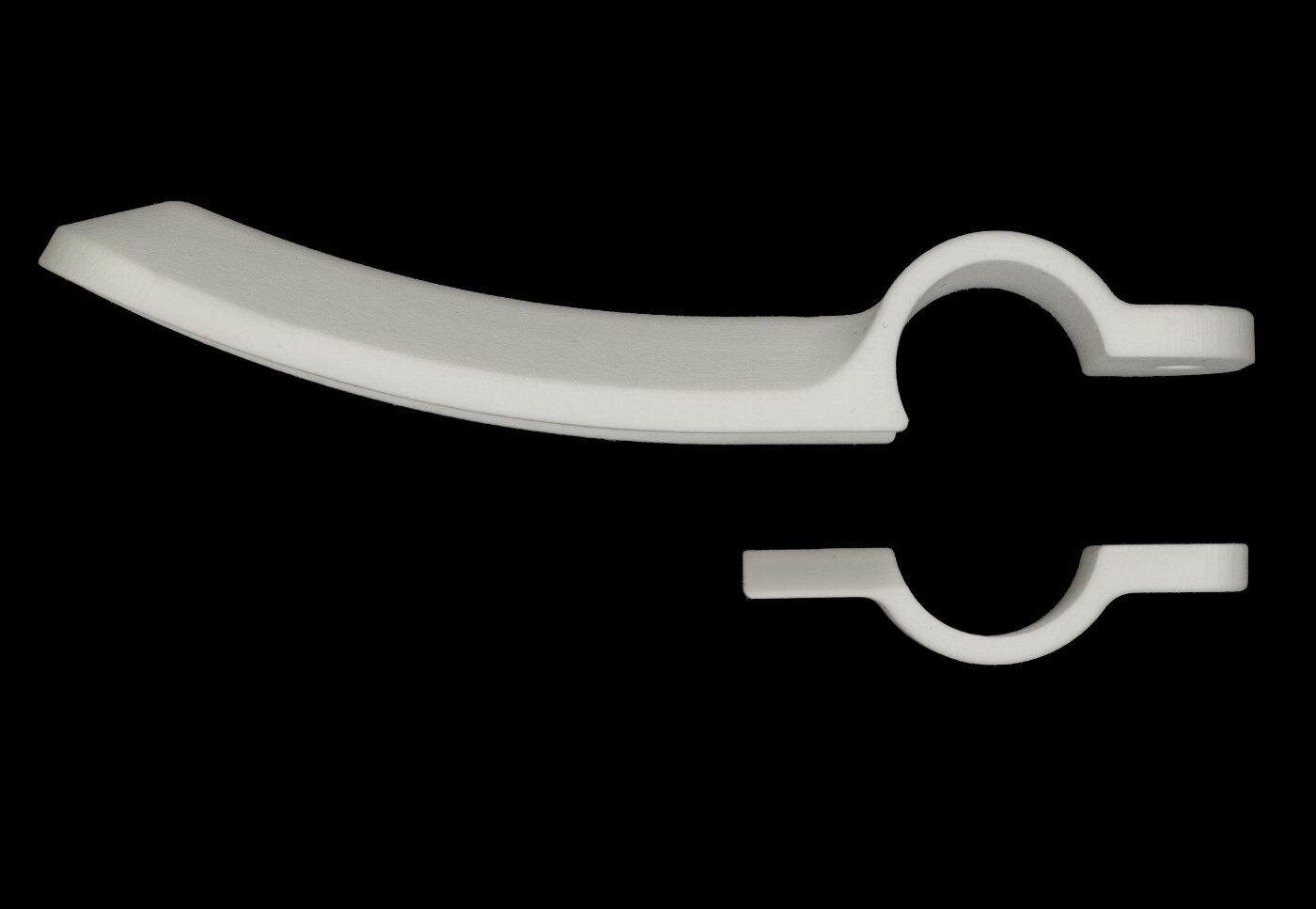When you come to visit V&A South Kensington, I am sure you will notice people dressed in bright orange or blue V&A jackets. Or perhaps they’re wearing a grey-and-orange top with a museum object-inspired pattern. They walk around the galleries or stay by the tills, carrying a radio and welcoming everyone. I am one of those people. There are quite a lot of us and, together with our managers, we are the Visitor Experience Team. We look after the galleries and the visitors who come to see them. Our role, which puts great emphasis on facilitating enjoyable visits, means that we have the pleasure of receiving curatorial insights into the exhibitions and collections. This not only helps us better assist our visitors, but it’s also a chance for us to deepen our knowledge of the museum.
I still remember very clearly the first time I stepped inside Design: 1900-Now. It was during a training session, just before the gallery reopened to the public after refurbishment. The curatorial team took my colleagues and me on a tour of the gallery while work was still in progress, presenting the display and its narratives. Although some final details were not yet complete, I immediately felt I was in a different kind of gallery. I was not looking at the history I had studied in secondary school, nor was I looking at contemporary artists’ works. I was instead encouraged to take a closer look at the world I live in and the tools I use to experience it.

I came to understand this impression better when I spent some time working in the gallery once it opened. No gallery in the museum addresses the present in the way Design: 1900-Now does. American author Steven Johnson has written a fascinating history book called How We Got To Now where, in an engaging yet informative way, he highlights the connections between seemingly unrelated events that have led to the innovations of the modern world. For instance, would you instinctively link Johannes Gutenberg’s invention of the printing press to the discovery of microscopic cells from which our bodies are made? Possibly not, and that’s where the beauty lies: in the surprise of an unexpected discovery or link. From the start, I was under the impression that Design: 1900-Now does something similar: it takes us on a journey to appreciate how people’s lives have changed since 1900 and how design, drawing on previous inventions and employing technological advancements, has responded to the challenges faced by people. It allows us to explore ties that are not easy to see at first glance.
While I was delightedly exploring the gallery space and answering occasional questions from visitors about the museum, I wondered about what kind of impressions these visitors were developing. Did they feel surprised, like I was the first time saw the gallery? Did they also feel that history happens at the same pace of our existence, when they were looking at the cases of pandemic-related innovations? And how should I introduce this gallery to someone who has not seen it?
With these questions in mind, I read all the labels and walked up and down the gallery a few times reflecting on what is in there and its significance. I found especially interesting the material around the COVID-19 pandemic, the developments in communication technology and the power of visuals in the fight for social justice. The repurposed snorkelling mask used to treat COVID patients, GIFs and stickers made popular by Tencent’s messaging app WeChat and Amanda Phingbodhipakkiya’s posters are only some of the highlights. The Rapid Response Collecting initiative, introduced in 2014, is especially exciting, as it focuses on acquiring objects in response to major historical moments happening right now. It was somehow surreal to see the history I have experienced in my own skin (quite literally in the case of COVID-19) presented through label tags and curated displays. The fingertip pulse oximeter, a device used to measure a patient’s pulse and blood oxygen level, brought back several memories of the worst days of the pandemic. It shows our commitment to overcome enormous challenges.

I have witnessed surprised responses from visitors, such as ‘I can’t believe this is here!’ and similar expressions. I remember a lady spending some time looking at our COVID-19 objects, perhaps the touch-free 3D-printed door handles, which she might have recognised from news coverage on the pandemic. A young man, similarly, was surprised by how fast the gallery reacts to events happening around the world. Another piece that provokes a mix of excited and intrigued reactions is the first 2007 iPhone. I exchanged a few words with a visitor about how crazy it feels to see something so familiar, and of which memories are still very vivid, accompanied by a tag in a museum’s gallery. Another time a group read in awe about the cheetah-inspired running blades and the sensor-assisted clothing at the entrance of the room, admiring other products of human ingenuity.

A big benefit of my role is that I have the pleasure to introduce the museum to people who have never visited before, or to suggest something new to returning visitors. The responsive nature of this gallery is not common, so, whenever I’m asked about where to go next in the museum, I know a highlight of our collections is surely Design: 1900-Now. I know that the links it creates to our present lives, how it reflects human ingenuity will interest you. Next time you visit, make sure to stop by on Level 2 to explore the world of innovative design.



A excellent read I like the champagne lamp and the robotic arm. As a volunteer blogger we connected with the enthusiasm of the writer and excellent writing.
I enjoyed this piece, thanks Federica, partly as it’s interesting to see an insider’s (non-curatorial) perspective on a set of galleries I really love, which is hard to choose at the V&A!
Please would you or a member of the website team just add the link above for Steven Johnson’s book? I agree it’s a fascinating read.